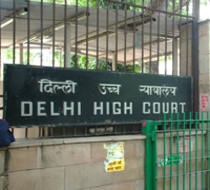Source: CNN-IBN
New Delhi: Women employees in India can now sue their colleagues for sexual abuse and harassment after the Union Cabinet on Thursday finally approved the introduction of the Protection of Women against Sexual Harassment at Workplace Bill, 2010 in Parliament.
The bill seeks to ensure protection of women against sexual harassment at the workplace, both in public and private sectors whether organised or unorganized.
Women can now complain against harassment ranging from physical contact, demand or requests for sexual favours, sexually coloured remarks or showing pornography.
The bill, applicable to all organised and unorganised sectors, also has a penalty provision for employers who do not comply.
Implementation of the Bill will be the responsibility of the Central Government in case of its own undertakings/establishments and of the State Governments in respect of every workplace established, owned, controlled or wholly or substantially financed by it as well as of private sector establishments falling within their territory.
Through this implementation mechanism, every employer has the primary duty to implement the provisions of law within his/her establishment while the State and Central Governments have been made responsible for overseeing and ensuring overall implementation of the law. The Governments will also be responsible for maintaining data on the implementation of the law.
Salient features of the Bill are as follows:
1) The Bill proposes a definition of sexual harassment, which is as laid down by the Honourable Supreme Court in Vishaka vs State of Rajasthan (1997). Additionally it recognises the promise or threat to a woman's employment prospects or creation of hostile work environment as 'sexual harassment' at workplace and expressly seeks to prohibit such acts.
2) The Bill provides protection not only to women who are employed but also to any woman who enters the workplace as a client, customer, apprentice, and daily wageworker or in ad-hoc capacity. Students, research scholars in colleges/university and patients in hospitals have also been covered. Further, the Bill seeks to cover workplaces in the unorganised sectors.
3) The Bill provides for an effective complaints and redressal mechanism. Under the proposed Bill, every employer is required to constitute an Internal Complaints Committee. Since a large number of the establishments (41.2 million out of 41.83 million as per Economic Census, 2005) in our country have less than 10 workers for whom it may not be feasible to set up an Internal Complaints Committee (ICC), the Bill provides for setting up of Local Complaints Committee (LCC) to be constituted by the designated District Officer at the district or sub-district levels, depending upon the need. This twin mechanism would ensure that women in any workplace, irrespective of its size or nature, have access to a redressal mechanism. The LCCs will enquire into the complaints of sexual harassment and recommend action to the employer or District Officer.
4) Employers who fail to comply with the provisions of the proposed Bill will be punishable with a fine which may extend to Rs 50,000.
5) Since there is a possibility that during the pendency of the enquiry the woman may be subject to threat and aggression, she has been given the option to seek interim relief in the form of transfer either of her own or the respondent or seek leave from work.
6) The Complaint Committees are required to complete the enquiry within 90 days and a period of 60 days has been given to the employer/District Officer for implementation of the recommendations of the Committee.
7) The Bill provides for safeguards in case of false or malicious complaint of sexual harassment. However, mere inability to substantiate the complaint or provide adequate proof would not make the complainant liable for punishment.
The Original article can be found here.
The Entire Text of the Judgment in Vishaka v. State of Rajasthan is available here.



